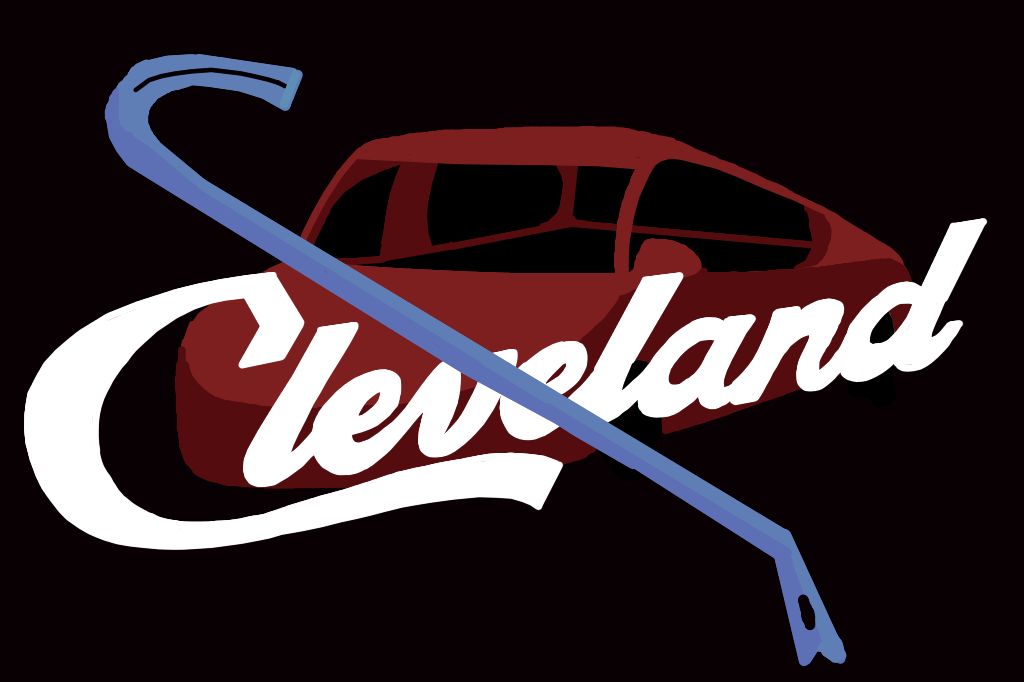On Sept. 23, the campus community was informed that a Jeep Grand Cherokee was stolen from Case Western Reserve University Lot 42. And this isn’t an isolated event. Before this, the community was notified of a stolen vehicle near Hazel Drive on Sept. 15, multiple attempted vehicle thefts on Aug. 31 and a stolen vehicle on Aug. 25.
The campus and the surrounding area have seen increasing criminal activity recently as informed by the Security Alert and Rave alert system, and many students are worried about what consequences this could have for their safety and that of their possessions. Last year, the school published tips on how to keep cars safe after a series of posts on social media publicized how to steal certain types of cars, such as Kias and Hyundais. Although these are not the only cars being stolen—let alone being broken into—the frequency of this activity on CWRU’s campus has alarmed many students and community members.
Looking at motor vehicle thefts from 2018 to 2020, only four cars were reported stolen—or attempted to be stolen—to CWRU Police. In 2021, this number increased to two and then increased in 2022 to 11. These data come from the Annual Security and Fire Safety Report. According to the report released on Oct. 1, in 2023 the number of thefts and attempted thefts shot up to a staggering high of 64. According to an Observer investigation, the number for 2024 stands at 25, with eight thefts and attempted thefts reported in September 2024. These numbers come from Daily Crime Logs, which the Division of Public Safety maintains for all crimes reported to them within their patrol zone.
This upward trend of auto thefts is reflected in citywide data, where 4,718 cars were stolen in 2022 and 5,576 in 2023. In 2024 thus far, over three thousand cars have been stolen from Cleveland’s streets.
And while car thefts are a widespread source of frustration and concern at CWRU, car break-ins are also common on campus. For example, in July, five cars were broken into, described as “Motor Vehicle Trespass.”
Frighteningly for CWRU students, the number of car thefts increased dramatically once classes resumed. For example, according to Daily Crime Logs, 32 break-ins were reported in August and 19 in September, pushing the grand total to 74 cars broken into since the start of the calendar year. During the same three-month period, the Cleveland Division of Police reported just over 900 motor vehicle thefts and break-ins. For reference, police at Cleveland State University only reported six motor vehicle break-ins in September.
Many CWRU students who keep their car on campus have expressed their concerns about this surge of criminal activity. The highest campus resident price of a parking permit is $107.10 per month. At this price point, parking at CWRU should guarantee an adequate parking environment and safe place for students and community members to leave their cars, but many of the reports to CWRU Police come from attempted break-ins on campus lots. For example, Lot 44, located opposite Fribley Commons in the South Residential Village, was home to 13 attempted break-ins in August.
Furthermore, with Lot 78 near Triangle Tower, many students have complained about the bar to the parking garage being left open for anyone from outside the campus to enter. A tip-off to The Observer’s website in February of 2024 shows just that—a case in which a car was stolen from Lot 78 and simply driven through the barriers, leaving the gate damaged and the lot unguarded for a period of time. This is further corroborated in a corresponding police report. In all, the fact that motor vehicle thefts and break-ins have occurred multiple times where CWRU students and other community members pay to park, seems to highlight a lapse in campus security. Students should not constantly have to be concerned about the safety of their property, or even their safety within said lots, as they go about their daily life.
Currently, the CWRU police department consists of 35 sworn officers and some security officers. If additional support is needed, the campus may be supported by the University Circle Police Department, the Cleveland Division of Police and, occasionally, the police staff at University Hospitals, Cleveland Clinic and Cleveland Heights. However, it can be inferred that the surveillance of parking garages is typically not considered a high priority issue that would involve all of these parties.
The university is clearly aware of the problem since the Division of Public Safety began to offer free steering wheel locks to students, staff and faculty in December 2022. And although it is great that the school keeps students informed through Rave alerts and campus security, it seems as if campus security should have increased more dramatically than it has, especially around car parks, due to the rapid increase in car-related criminal activity within the past few years.
While the campus uses the Rave alert system to inform students about security issues on campus—following the Clery Act to a tee—more must be done in order to decrease the amount of car thefts and break-ins on CWRU’s campus. It is clear from the data that this new problem has simply not been fixed with steering wheel locks and words of caution. As CWRU grows its undergraduate population, it must also invest in the appropriate infrastructure to keep students—and their motor vehicles—safe.
After all, if we’re paying the privilege to park our cars in a lot that is owned by CWRU, they might as well shift gears to make the purchase worth it.


